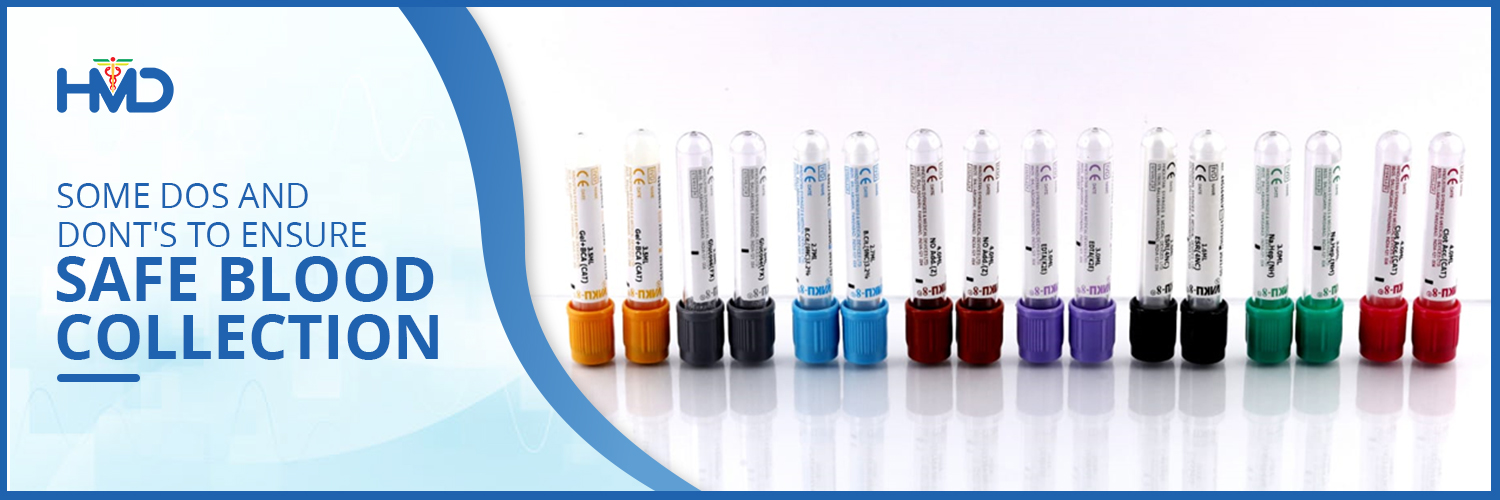

The drawing or collection of blood – also known as Phlebotomy – is one of the oldest and most common invasive procedures in health care. It is an indispensable tool for diagnosing any medical condition. Though Phlebotomy services are offered worldwide in hospitals, clinics, and outpatient facilities, the practice varies significantly in terms of training, blood-sampling techniques, use of safety devices, and disposal methods between countries, institutions, and even individuals within the same country.
Risks Associated with Phlebotomy
During Phlebotomy, the safety of healthcare workers and patients is of paramount importance as by its very nature, the procedure exposes people to risk from blood-borne pathogens such as human immunodeficiency virus (HIV), hepatitis C virus (HCV), hepatitis B virus (HBV), and pathogens causing viral haemorrhagic fevers and dengue.
Moreover, if a blood sample is not collected in the proper fashion, the results may be inaccurate and misleading to the clinician. Errors in blood collection could result in issues such as contamination, haemolysis, and inaccurate labelling.
Important Guidelines and Dos & Don’ts
Despite similar perceptions of risk, Phlebotomy practices vary among health-care personnel. To help standardize the procedure and improve outcomes for both healthcare personnel and patients, the World Health Organization (WHO) has a recommended set of guidelines on the best practices in drawing blood. They are as follows:
- Assemble the requisite equipment such as laboratory sample tubes, non-sterile gloves, a tourniquet, an alcohol hand rub, gauze or cotton-wool ball, laboratory forms and a puncture-resistant sharps container.
- Prepare the patient by explaining the procedure and obtaining her/his consent.
- Select the site – a vein that is visible and straight – and apply the tourniquet.
- Clean hands and wear gloves.
- Disinfect the site of entry and allow the area to dry.
- Collect the blood, introducing the needle along the vein at a 30 degree angle.
- Carefully fill the laboratory sample tubes.
- Draw blood collection tubes in the correct order. This is to avoid cross-contamination of additives between tubes, as colour coding and tube additives sometimes vary.
- Clean the contaminated surface, perform hand hygiene, and complete patient procedure by examining the insertion site and thanking the patient.
- Prepare the laboratory samples for transportation.
- Clean up spillage of blood or body fluids, if any.
The important dos and don’ts for preventing infection during and after the procedure are as follows:
| DO | DO NOT |
| Perform hand hygiene using soap and water or alcohol rub, carefully cleansing the wrists and spaces between fingers for a minimum of 30 seconds. | Forget to clean your hands before the procedure. |
| Use a pair of non-sterile, disposable gloves per procedure/patient | Wash gloves for reuse or use the same pair of gloves for more than one procedure/patient. |
| Use a single-use device for blood drawing and sampling. | Reuse a syringe, needle or lancet. |
| Disinfect the skin at the venipuncture site. | Touch the puncture site after disinfecting it |
| Discard the used needle and syringe immediately into a sharps Container. | Keep an unprotected needle lying outside the sharps container. |
| Use the one-hand scoop technique if recapping a needle is necessary. | Recap a needle using both hands |
| Seal the sharps container with a solid, tamper-proof lid. | Overfill a sharps container. |
| Place the laboratory sample tubes in a sturdy rack before injecting into the rubber stopper | Inject into a laboratory tube while holding it with the other hand. |
| Promptly report any accident linked to a needle or sharp injury. Start post-exposure prophylaxis (PEP) as soon as possible in accordance with protocol. | Delay PEP after accidental injury and exposure to potentially contaminated fluid. |
Blood Collection Tools
In addition to the aforementioned guidelines, it is important to use the right blood collection tools to ensure safe blood collection.
Hindustan Syringes & Medical Devices Ltd. (HMD), one of the top five manufacturers of medical devices in the world, offers a set of blood collection apparatuses that are sterile, precise, and durable. Comprising blood collection tubes, needles, and winged sets, the range – known as Vaku 8 – has been developed using state-of-the-art technology to ensure hassle-free specimen collection while minimizing the risks associated with drawing blood.

Add Comment